Last updated on June 16, 2025
Written by the CTLD Instructional Media Team
What do cannabis compliance, intergalactic construction missions, and color theory in contemporary art have in common? They are all at the center of three unique, media-rich courses recently developed through CTLD. From simulation-based learning and sci-fi-themed assignments to studio-recorded painting demos and expert roundtable videos, these courses demonstrate what is possible when instructional media, subject matter expertise, and multimedia learning theory come together to create immersive, engaging, and practical learning experiences.
Contents
Adventures in Learning: Cannabis, Construction, and Color Theory Take the Spotlight
Video Spotlight
[Length 5:10, CC Available]
Showcase Examples
Cannabis 101 for Hospitality (HLDR 1200)
Faculty Lead: Shannon Donnelly
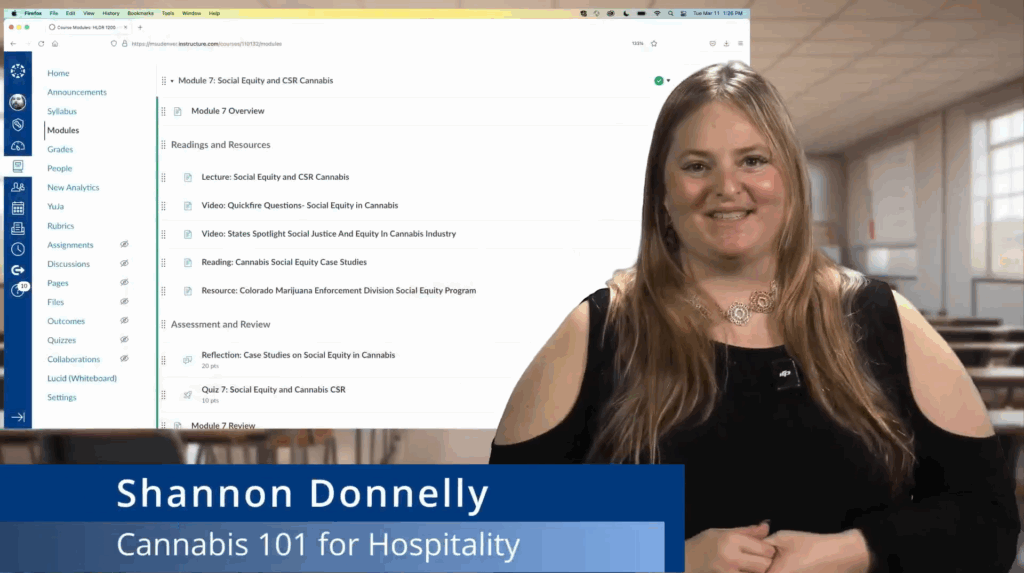
In a rapidly evolving industry, Cannabis 101 for Hospitality bridges the gap between compliance, equity, and exceptional customer service. Designed by instructor Shannon Donnelly in collaboration with CTLD’s instructional design team, this course guides learners through the complex terrain of cannabis biology, policy, business practices, and guest experiences, all through the lens of hospitality.
Instructional Media in Action:
- Professor Donnelly incorporated the Personalization and Embodiment Principles of Dr. Richard Mayer’s Theory of Multimedia learning by opening each module with a clear, conversational tone, using direct eye contact with the camera and facial expressions to establish the presence of a real instructor for students.
- A custom-built Twine simulation guided students through branching storylines that focused on the real-life impacts of cannabis legislation, applying the Segmenting Principle by presenting information in manageable, decision-based episodes that support empathy and critical thinking.

- Interviews with industry leaders were recorded as multicam discussion panels with leading questions from Instructor Donnely. Rapid-fire questions and answers were also recorded, with each question relating to the cannabis industry.

The course demonstrates how multimedia, storytelling, and the incorporation of industry professionals’ knowledge and expertise can work together to prepare students for ethical and informed engagement in the evolving cannabis industry.
Construction Project Management 2010 (CPM 2010)
Faculty Lead: Carolyn McGary
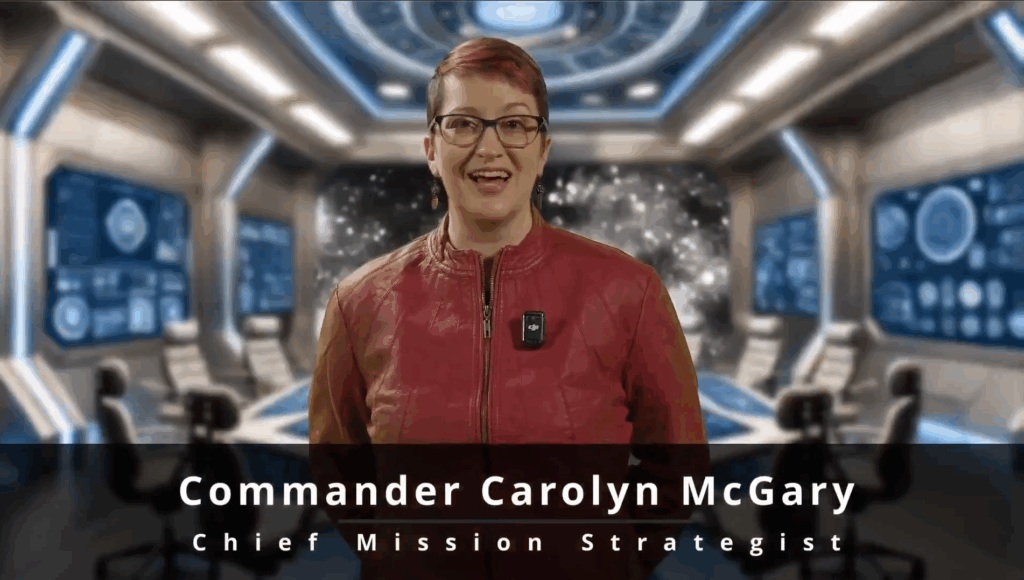
In CPM 2010: Building Technology and Software, Professor Carolyn McGary leads students into the imaginative world of the Intergalactic Facilities Alliance, where learning project management becomes an interplanetary adventure. As space recruits, students take on missions to solve infrastructure challenges across planets, applying technical expertise and software tools to navigate complex, real-world scenarios in a uniquely engaging format.
Instructional Media in Action:
- Sci-fi-themed Open Educational Resources (OER), transformed standard assignments into immersive missions, using the coherence principle to focus student attention on essential content.
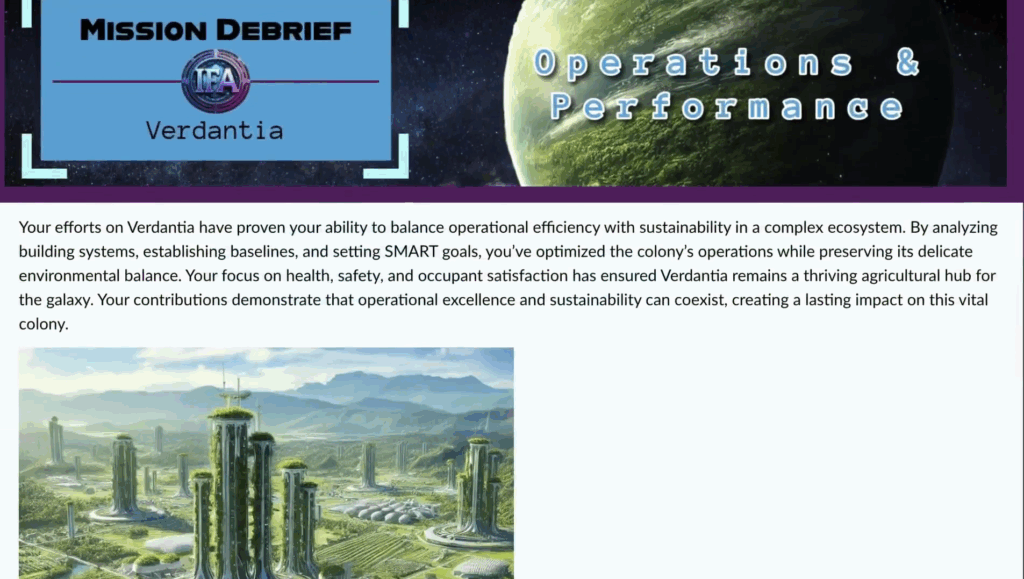
- Instructional videos were produced as episodic narratives, scripted in a conversational tone and segmented by topic. This format supports the Segmenting and Personalization Principles of Mayer’s Theory, allowing students to absorb concepts in clear, structured chunks.
- Twine simulations placed students in decision-making roles, introducing key concepts early and reflecting the pre-training principle, while reinforcing application of those concepts through realistic scenarios.
- Gamified progress tracking with badges and titles kept learners motivated and focused, helping frame course progression in a clear, rewarding structure.
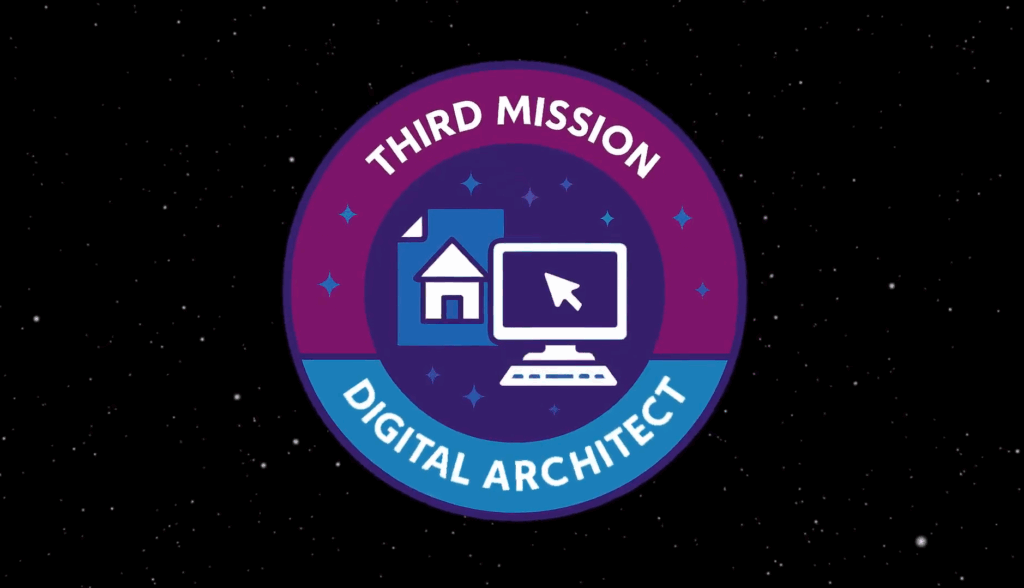
This course demonstrates that imaginative storytelling and cutting-edge instructional media design can drive motivation and mastery in technical fields, transforming benchmarks into challenges and lectures into launches.
Studio Foundations 2D (ART 1101)
Faculty Lead: Dr. Yunjin La-mei Woo
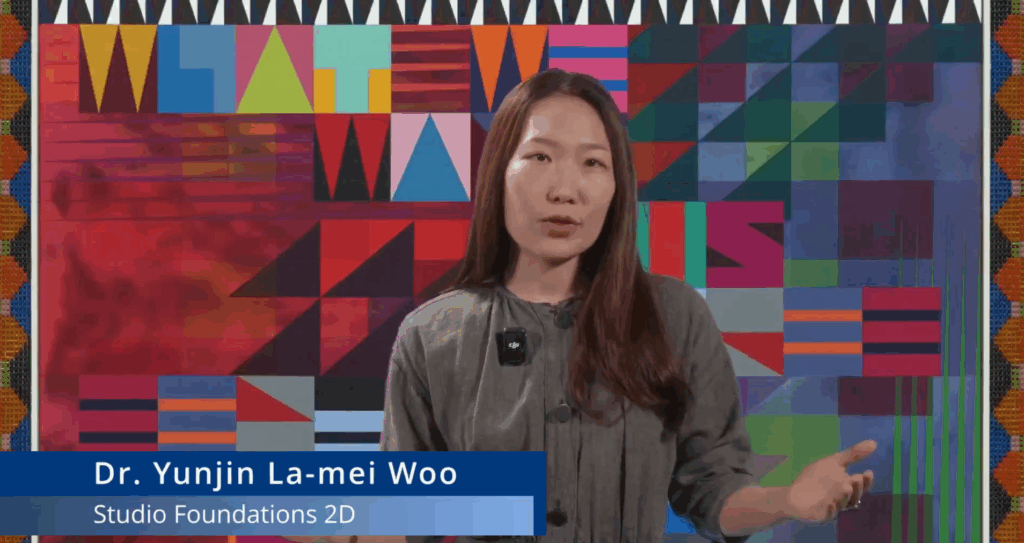
In Studio Foundations 2D, students don’t just study images. They learn to think through them. Taught by Dr. Yunjin La-mei Woo and developed in close collaboration with the CTLD media team, the course combines hands-on creative work with critical reflection to explore how images shape meaning, culture, and perception. Students develop a visual vocabulary grounded in color theory, design principles, and conceptual art-making while engaging in socially informed image-making practices and creative research. Instructional videos, grounded in Richard Mayer’s Theory of Multimedia Learning, feature Dr. Woo delivering on-camera lectures and real-time demonstrations. Her professional presence fosters a welcoming atmosphere where curiosity, confidence, and artistic experimentation are encouraged from the very beginning.
Instructional Media in Action:
- Dr. Woo introduced color theory using a studio-recorded demonstration, featuring a hand-painted color wheel and real-time mixing. She spoke directly to students in a clear, warm tone, using expressive gestures and visible materials. This brought the principles of personalization and embodiment to life, helping students feel like they were learning alongside their instructor.
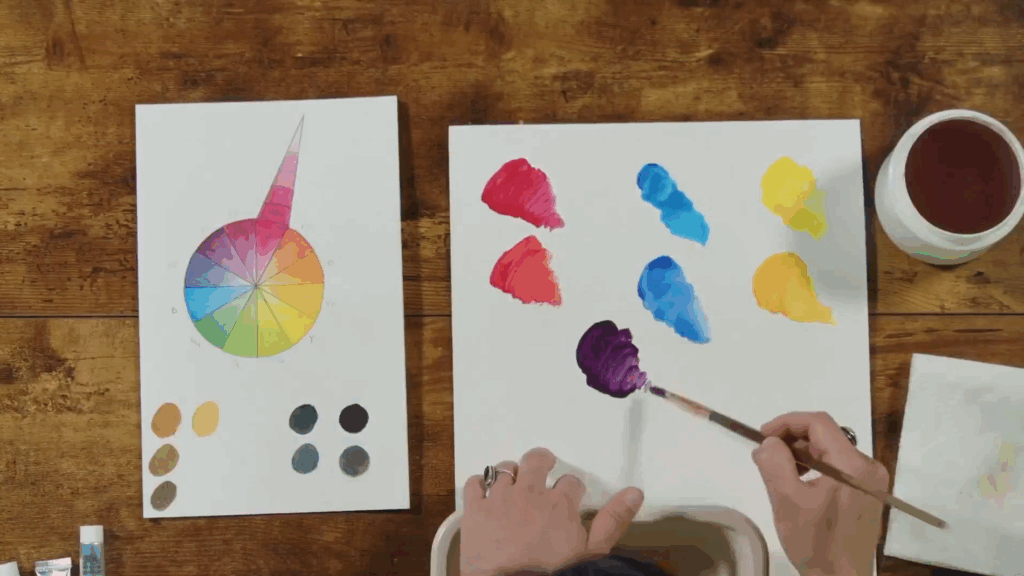
- The segmenting and coherence principles were applied by organizing the content into short, focused videos, each covering a single topic such as monochromatic, analogous, or complementary color schemes. By keeping visuals simple and limiting each segment to a single idea, students can absorb the material without distraction or overload.
- To demonstrate how color theory works in practice, the instructor used physical examples in the studio by mixing paint, adjusting palettes, and referencing completed works while describing her actions. A ceiling-mounted camera captured these live demonstrations from above, providing a clear visual representation of the content from the instructor’s perspective. As she audibly annotated each step of the process, students received both visual and verbal cues, supporting multiple modes of learning and ensuring the material remained accessible and engaging for a diverse range of learners.
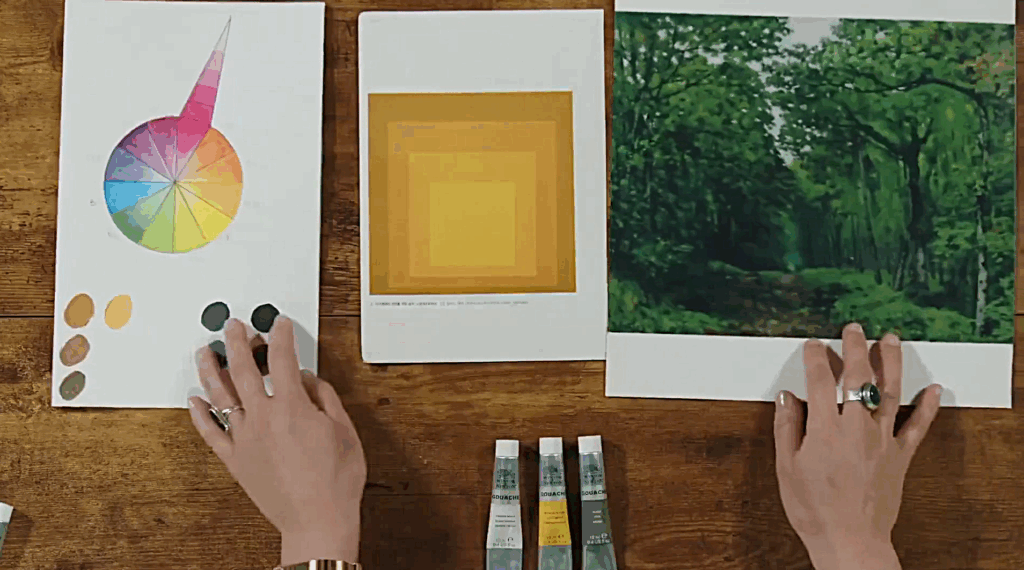
Across these courses, the CTLD media team, in collaboration with the instructors, prioritized clarity, creativity, and student engagement by applying multimedia learning principles in thoughtful ways. From expert roundtables and gamified simulations to real-time painting demos, each course offered students a dynamic and accessible experience that bridged theory and practice through innovative instructional media.
Moving Forward
The CTLD Instructional Media Design is driven by a steadfast commitment to enhancing educational experiences through innovative multimedia resources. They understand the challenges educators and learners face and are dedicated to addressing them head-on through collaboration, creativity, and the use of cutting-edge multimedia technology.
By partnering closely with faculty members and other subject matter experts, they ensure that their multimedia resources are both academically rigorous and engaging and inspiring. Their invaluable insights and feedback shape and enrich students’ learning experiences across disciplines.
As they move forward, their commitment to excellence remains unwavering. They will continue to collaborate, innovate, and evolve, guided by their mission to empower learners and educators.
Partnering for Continuous Improvement in Teaching and Learning
A significant factor in the success of these and similar projects is the support and funding from the Office of Online Learning (OOL), which has been instrumental in enhancing the quality of our online educational endeavors. OOL’s support and contributions have empowered faculty members to innovate and create a more enriching educational environment for all. Please visit the Office of Online Learning for more information about their initiatives to support MSU Denver faculty members and students.
Want to get involved?
One way to find help with implementing student supports in your course is the CTLD Course Development Cycle. This is an intensive, but rewarding, process where an instructional designer will work with you over the course of several months to identify course objectives, develop learning activities, create a user-friendly course, record high-quality multimedia content, and much more.
For more information on the CTLD Development Cycle, as well as how to apply to join, please see our CTLD Course Development Cycle spotlight.
Have questions?
Want help on this or other teaching and learning topics? Please visit us for drop-in support (10am-3pm, M-F) or try one of our self-help tutorials.